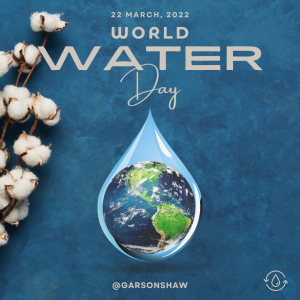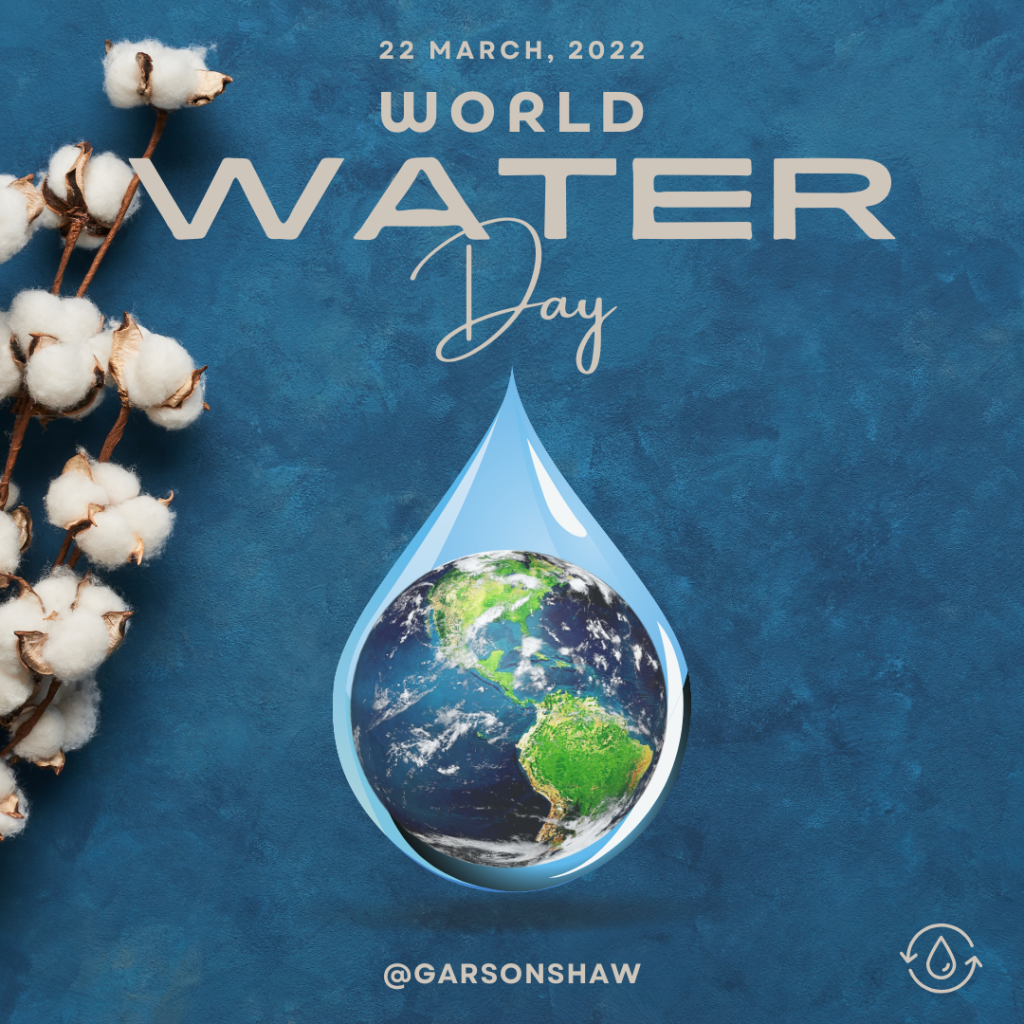Celebrate Water Day By Reducing Textile Production

The textile industry is one of the largest consumers of water globally and is associated with significant water waste. Several stages of textile production contribute to this water consumption and waste:
Here are some general statistics and estimates related to water consumption in textile production:
- Water Consumption per Ton of Textile Material:
- According to the World Wildlife Fund (WWF), it takes approximately 2,700 liters of water to produce one cotton T-shirt, which is roughly equivalent to what an average person drinks over 2.5 years.
- The Water Footprint Network estimates that the global average water footprint of textile products (including cotton, synthetic fibers, and other materials) is around 17,000 liters per kilogram of textile.
- Water Consumption by Production Stage:
- Cotton cultivation is particularly water-intensive. According to the World Bank, cotton farming accounts for about 2.4% of the world’s cropland but consumes 6% of the world’s pesticides and 16% of insecticides. Cotton cultivation also requires substantial irrigation, with estimates suggesting that it takes around 20,000 liters of water to produce one kilogram of cotton lint.
- The dyeing and finishing stages of textile production are also significant contributors to water consumption. Estimates vary, but it’s common for textile dyeing to require several dozen liters of water per kilogram of fabric, depending on the dyeing method and type of fiber.
- Global Water Consumption by the Textile Industry:
- The United Nations Industrial Development Organization (UNIDO) estimates that the textile industry is responsible for approximately 20% of global industrial water pollution.
- According to the Ellen MacArthur Foundation, the textile industry consumes around 93 billion cubic meters of water annually, which accounts for 4% of global freshwater withdrawal.
These statistics highlight the substantial water footprint of the textile industry and underscore the importance of implementing water-saving measures and sustainable practices throughout the textile supply chain to mitigate water consumption and reduce environmental impacts.
Efforts to address water waste in the textile industry include:
- Choose Secondhand: Secondhand clothing reduces the demand for new clothing production, which in turn reduces the environmental impact associated with textile manufacturing. Textile production is resource-intensive, requiring large amounts of water, energy, and chemicals. By extending the lifespan of clothing through secondhand markets, we can reduce the environmental footprint of the fashion industry.
- Water Recycling and Treatment: Many textile manufacturers are implementing water recycling and treatment systems to minimize water usage and reduce pollution. These systems treat wastewater from production processes, allowing it to be reused within the facility or discharged safely into the environment.
- Improved Technologies: Advances in technology, such as low-water dyeing techniques and digital printing methods, are helping to reduce water consumption and waste in textile production processes.
- Sustainable Sourcing: Some brands and manufacturers are focusing on sourcing materials from sustainable and water-efficient sources. For example, organic cotton farming typically uses less water than conventional cotton farming, and innovations in water-efficient crop cultivation are being explored.
Consumer Awareness and Demand: Increasing consumer awareness about the environmental impacts of textile production, including water waste, can drive demand for more sustainable and water-efficient products. This can incentivize brands and manufacturers to adopt more sustainable practices throughout their supply chains.

